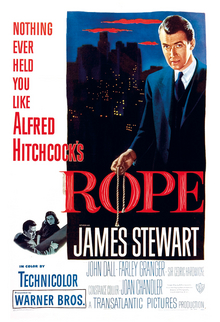
The plots revolves around two young men who, having strangled their classmate, hide the body in their apartment only to later host a party with his friends and family in the very same room as a challenge to the 'perfection' of their crime. Its a captivating story that surmounts to much gripping tension as characters step inadvertently close to the truth for a most palpable sense of dramatic irony.



As such, the use of long unbroken scenes with some shots lasting upwards of ten-minutes, serves to heighten the drama and tension with a certain intimacy that is most compelling. It may sound odd at first, but its works incredibly well in engaging the audience for some very memorable shots, particularly the camera fixed for a long pause at an angle with the maid moving items back and fourth, slowly yet surely exposing the hiding place where the body dwells.


With the entire film based in the set of the apartment, it is not surprising that some great planning and deliberate camera movements were involved to create the illusion of a consistent shot. Its reminds me most of the 180 degree rule in our recent static camera workshops where certain boundaries in filming cannot be crossed in order to create a believable and coherent sequence. The background beyond the window is also a prime example of the careful attention to detail given to the set, showing the constant and progressive time of day throughout the movie.

Overall, Rope is a brilliant and prime example of experimental film techniques at its best, challenging the conforms at its time to create something truly timeless and unique. Compared to some of the fast paced editing of today, Rope provides a refreshing perspective on the use of editing, allowing the story to progress at a natural pace for a much more profound and memorable effect.









0 comments:
Post a Comment